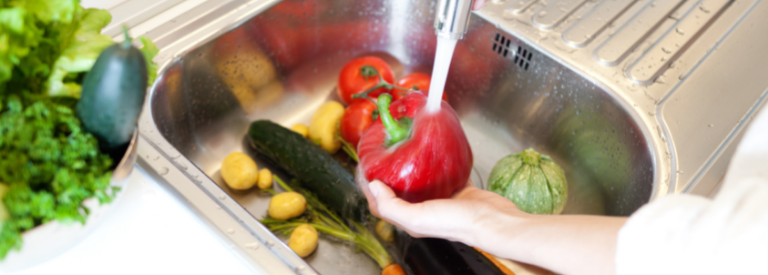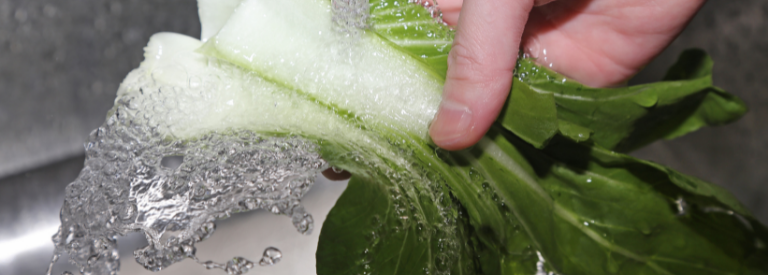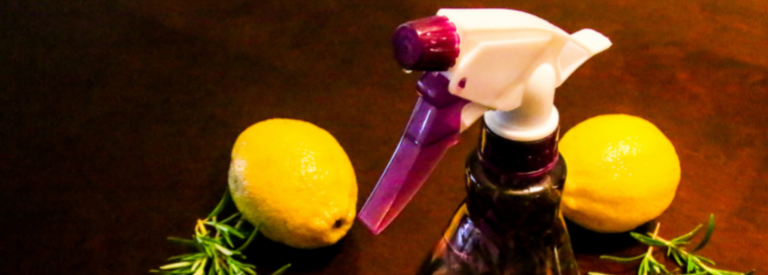Every restaurant features fruits and vegetables on its menu. Produce can be used to provide patrons with a nutritional side dish, entree, or sandwich topping. Regardless of how restaurants use produce, each fruit and vegetable needs to be thoroughly washed before being served to protect your customers from foodborne illnesses. This detailed guide helps you understand how to wash produce to ensure each fruit and vegetable included in a meal is safe for patrons to enjoy.
Why Do You Need To Wash Fruits & Vegetables?
The Food and Drug Administration (FDA) estimates that 48 million people get foodborne illnesses each year by consuming contaminated food. Fresh produce plays a large role in that number as it can easily become contaminated. For instance, when fruits and vegetables are in the growing phase, they can be exposed to harmful substances in the soil, poor hygiene among workers, or get contaminated by animals. Contamination can also occur during the food preparation process or inadequate storage.
To help prevent your customers from consuming contaminated produce, it’s
important to properly wash them. Washing fruits and vegetables can help
remove pesticides and bacteria they may have from their journey to your
kitchen.
What To Do Before Washing Fruits & Vegetables?
Before handling any fruit or vegetable, it’s essential to take precautionary steps. You should thoroughly wash your hands with soap and clean food preparation areas. Doing so helps prevent any microbes from being transferred from your hands or surfaces to the raw produce.
How To Wash Fruits & Vegetables
The two most common ways to clean fruits and vegetables is the soaking and spraying method. Each produce washing method is designed to get rid of harmful germs and chemicals from specific kinds of fruits or vegetables. The spraying method is most effective on produce with firm skin or smooth skin without crevices. The soaking method is ideal for fruits and vegetables that are tightly packaged and feature crevices on their skin. To ensure your produce is free of harmful chemicals or preservatives, we’ve created a detailed outline on how to clean produce using both methods.
How To Wash Produce Using The Soaking Method
The soaking method is commonly used for fresh-cut herbs, leafy greens, berries, and other produce that is soft. Adhere to these steps to guarantee that your fruits and vegetables are safe for consumption:
Produce Soaking Method Items:
- Cloth towel
- Colander
- Commercial produce wash
- Sink
- Water
Produce Soaking Method Instructions:
- Step 1: Wash your hands, sanitize the sink, and clean your colander.
- Step 2: Fill the sink with warm water and commercial produce wash. Follow the instructions on the produce wash label to determine the ratio of solution to water needed.
- Step 3: Place produce in the sink and let it soak for at least 30 seconds.
- Step 4: Remove produce from the sink and place it in the colander.
- Step 5: Run cold water over the produce and use your hands to thoroughly rub and rinse it.
-
Step 6: Place the produce on a towel and let it air
dry before use.

How To Wash Produce Using The Spray Method
Produce with firm skin like cucumber, apple, orange, and lime is great for cleaning using the spray method. Although some of these fruits and vegetables may have skin that you will peel off and not use, it’s still important to wash the produce. This will prevent dirt and bacteria from the skin to be transferred from the surface when peeling or cutting the produce. To clean your fruits and vegetables using the spray method, simply follow the steps below:
Produce Spraying Method Items:
- Cloth towel
- Commercial produce spray
- Sink
- Vegetable brush
- Water
Produce Spraying Method Instructions:
- Step 1: Wash your hands and clean the brush.
- Step 2: Spray the surface of each fruit or vegetable and let the coating sit for at least 30 seconds.
- Step 3: Use the brush to scrub the produce while it's running in cold water. Do this until you rinse the solution off.
-
Step 4: Place the produce on a towel and let it air
dry before use.

How To Make Your Own Fruit & Vegetable Spray
If your vendor doesn’t offer produce wash or you ran out of produce cleaning solution, you may consider making a fruit and vegetable spray yourself. While it may sound like a daunting task, it’s quite simple to make. All you need is a spray bottle, measuring cup, measuring spoon, vinegar, water, and lemon juice. Follow the instructions below to create a produce wash that effectively cleans your fruits and vegetables:
- Step 1: Add 4 cups of water to the spray bottle.
- Step 2: Add 1 cup of vinegar to the spray bottle.
- Step 3: Add 1 tablespoon of lemon juice to the spray bottle.
- Step 4: Close the spray bottle and shake it to mix the solution.
Do You Need To Wash Prewashed Fruits & Vegetables?
If you receive prewashed or ready-to-eat produce from food vendors, you do not need to wash them. However, it’s important to thoroughly wash your hands before handling them to prevent them from becoming contaminated. They should also not come in contact with unclean surfaces or utensils to avoid cross-contamination.
Always Clean Your Produce
Washing fruits and vegetables is an essential part of food safety. It ensures that harmful pesticides and chemicals are removed from produce]so that your guests have a safe dining experience. Remember, produce with crevices should be cleaned using the soaking method while produce with firm skin should be washed using the spraying method. Simply follow our guide on how to wash fruits and vegetables to ensure you provide customers with raw produce that is safe to enjoy.








